Horseradish (Armoracia rusticana) is one of those underrated yet powerful plants every gardener should grow. With its fiery flavor and unmistakable aroma, horseradish adds a spicy kick to sauces, roasts, and dips. But beyond its culinary punch, it’s also incredibly hardy and easy to grow.
The key to enjoying the best flavor from your horseradish lies in knowing exactly when and how to harvest it—and, just as importantly, how to prepare it properly. If you’ve been growing horseradish in your garden or containers, this guide will walk you through every step of the process—from recognizing the right harvest time to cleaning, grating, and storing your roots for maximum freshness and heat.
1. Understanding the Horseradish Plant
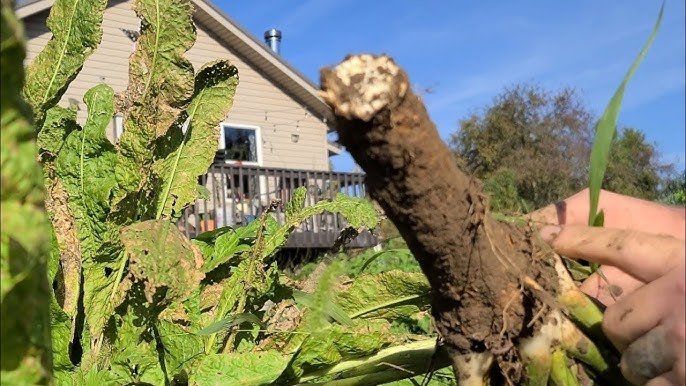
Before you grab your garden fork, it’s good to know a bit about this powerful root. Horseradish is a perennial plant that belongs to the mustard family (Brassicaceae), making it a cousin of cabbage, radish, and wasabi.
It grows long, thick white roots and tall green leaves. While the leaves are edible when young, the real magic lies underground—the root is where that pungent, spicy flavor develops.
Horseradish thrives in cool climates and can survive frost, making it a perfect plant for fall and early spring harvests. Once planted, it spreads vigorously and can come back year after year if not completely dug out.
2. When Is the Right Time to Harvest Horseradish?
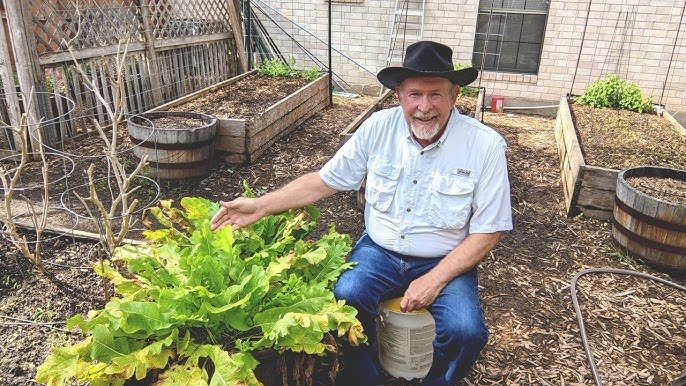
Timing is everything when it comes to harvesting horseradish. The best flavor and heat develop as the plant matures through cool weather.
Ideal harvest time:
- Late fall (October–November): After the first frost but before the ground freezes.
- Early spring: Before new leaves start to grow.
Frost triggers the roots to store more sugars and volatile oils, enhancing both the flavor and spiciness.
If you planted horseradish in spring, expect to harvest after about 10–12 months. The first year’s roots are usually the most tender and flavorful. Older roots can become woody, though they still pack plenty of heat.
3. Signs That Your Horseradish Is Ready for Harvest
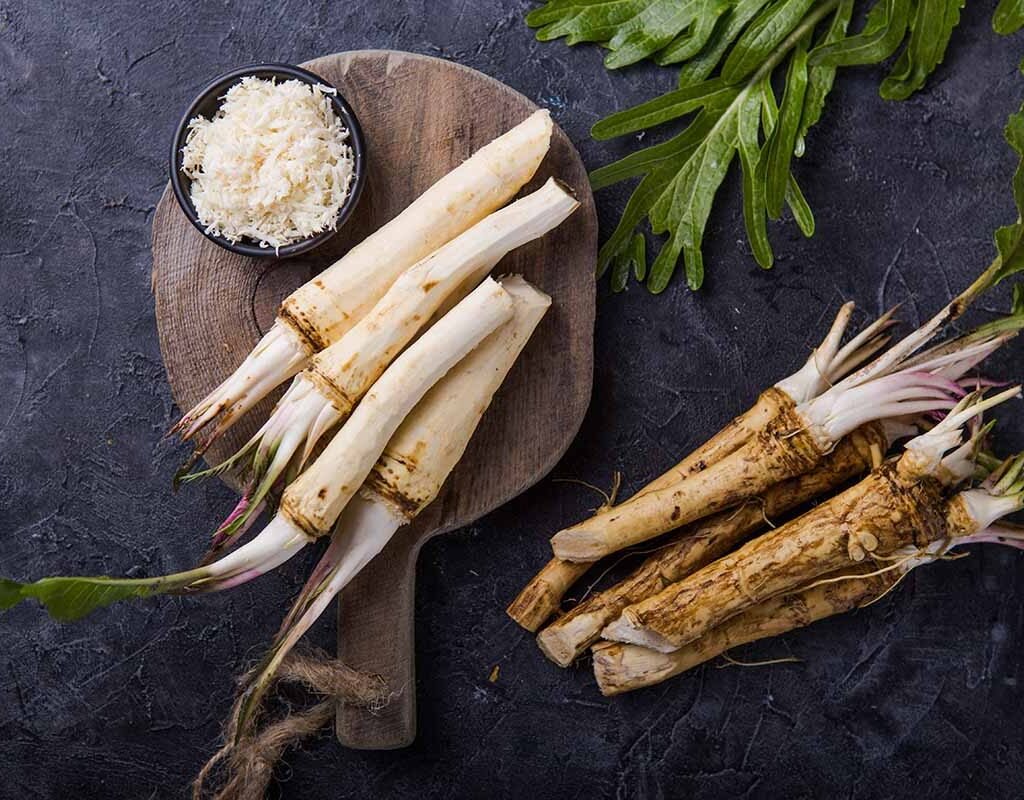
You’ll know your horseradish roots are mature when:
- The leaves start yellowing or dying back in late fall.
- The plant has been in the ground for at least one growing season.
- The roots are thick, firm, and about 8–12 inches long.
Avoid waiting too long, as overly mature roots can become fibrous and difficult to grate.
4. Tools You’ll Need for Harvesting
Gather the following tools before you begin:
- A garden fork or spade (not a shovel, which may damage roots).
- A pair of gloves (horseradish can irritate your skin).
- A bucket or basket for collecting roots.
- A knife or pruner for trimming leaves.
5. How to Harvest Horseradish Step by Step
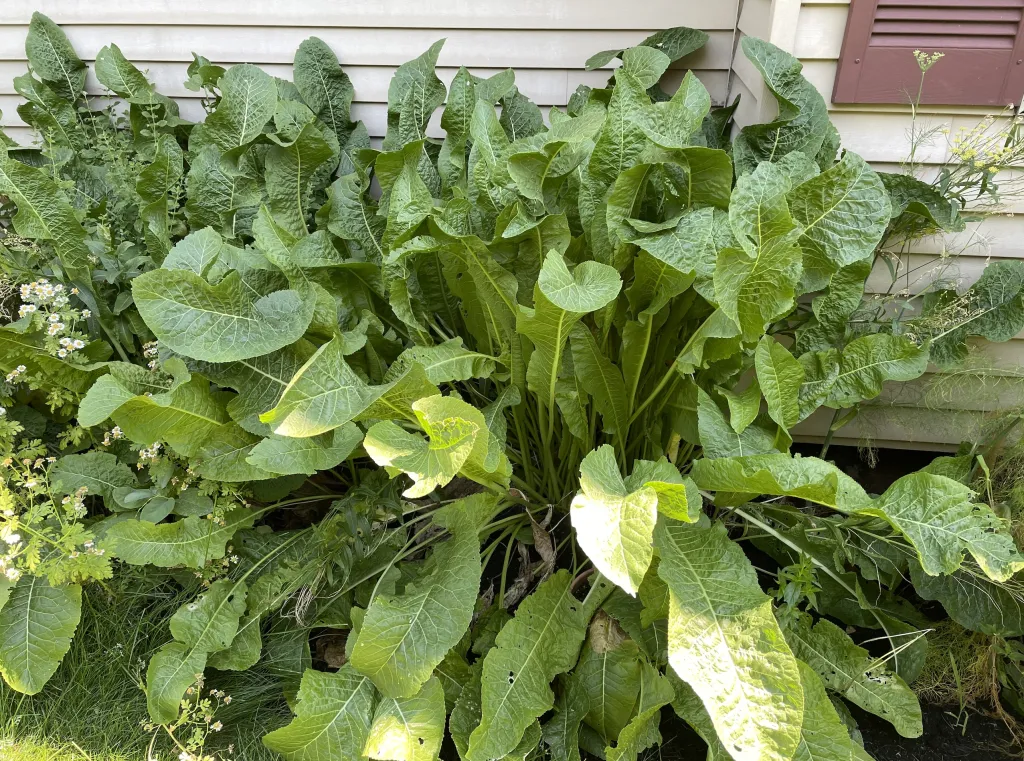
Step 1: Cut back the foliage.
Trim the leaves to about 1–2 inches above the crown. This makes it easier to handle the plant while digging.
Step 2: Loosen the soil.
Insert your garden fork about 6–8 inches away from the crown and gently lift the soil around the plant. Be careful not to break the main root.
Step 3: Lift the plant.
Once the soil is loose, carefully pull out the entire root system. Horseradish roots can grow deep—up to 2 feet—so dig around to capture as much of it as possible.
Step 4: Separate the roots.
You’ll find a central main root and several smaller side roots. Keep the largest, thickest roots for grating and cooking. The thinner side roots can be saved for replanting next season.
Step 5: Shake off soil and rinse.
Gently shake off excess soil and rinse the roots under cool running water. Avoid scrubbing too hard until you’re ready to prepare them, as this can cause them to lose their pungency early.
6. How to Replant for Next Season
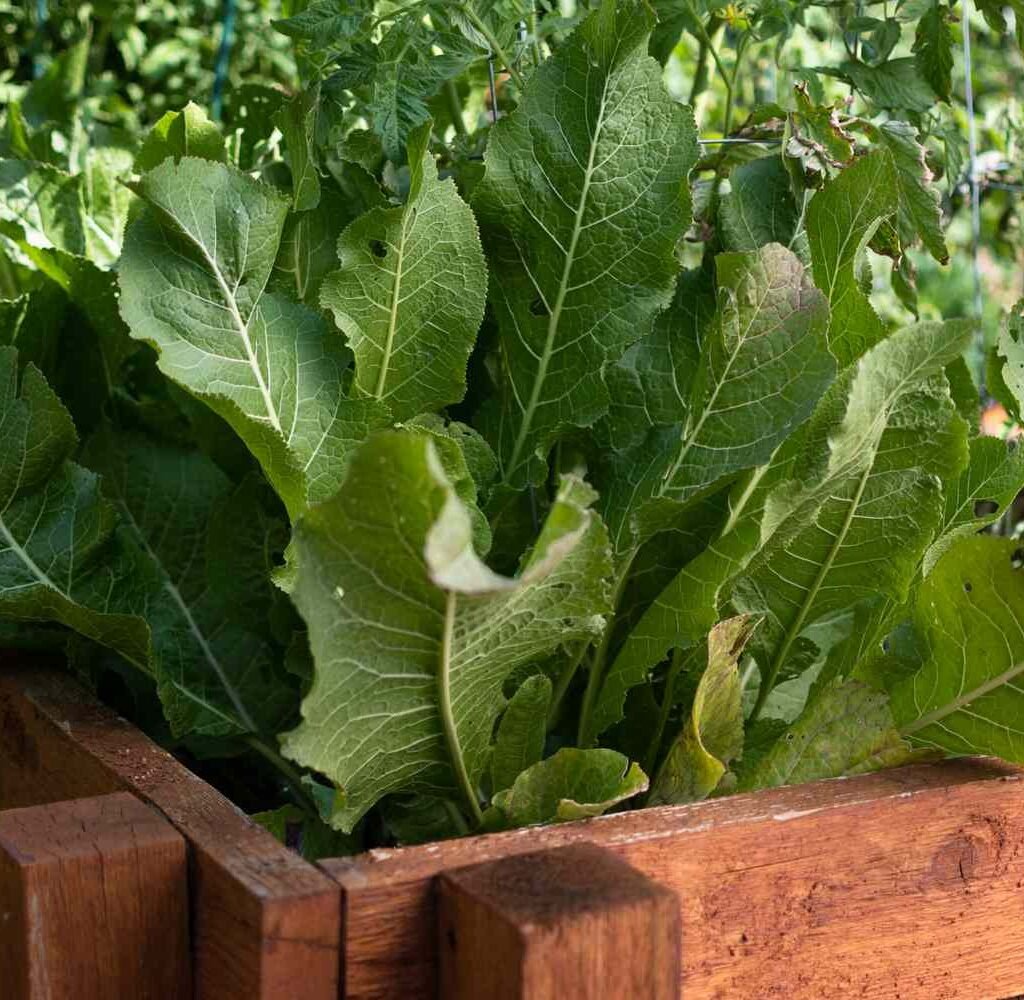
If you want a continuous supply of horseradish, it’s easy to propagate.
- Select a few healthy side roots about 6–8 inches long.
- Replant them in a new spot or container, about 2 inches deep and 12 inches apart.
- Make sure the upper end of the cutting is level with the soil surface.
These cuttings will establish themselves and produce full roots by the next growing season.
7. Preparing Horseradish After Harvest
Fresh horseradish is incredibly potent, and proper preparation helps bring out its full flavor. The moment you cut or grate it, the plant’s cells release isothiocyanates, the compounds responsible for its sharp, sinus-clearing heat.
Here’s how to prepare it properly:
Step 1: Clean the roots.
Rinse the roots thoroughly and peel off the brown outer skin using a vegetable peeler. Slice off any damaged or fibrous parts.
Step 2: Cut into pieces.
Chop the root into small chunks, about 1-inch pieces, to make it easier to grate or process.
Step 3: Grate or blend.
You can grate the horseradish manually with a fine grater or use a food processor for convenience. Be warned—this process releases strong fumes, so it’s best done in a well-ventilated area or outdoors.
Step 4: Add vinegar.
Once grated, the mixture quickly becomes spicy. To control the heat level:
- Add vinegar immediately if you want a mild flavor.
- Wait 2–3 minutes before adding vinegar for a stronger, hotter flavor.
Use white vinegar or apple cider vinegar, about 2 tablespoons per cup of grated horseradish. It not only preserves the flavor but also stops the enzyme reaction that causes the heat to intensify.
Step 5: Store in jars.
Transfer the prepared horseradish into airtight glass jars. Refrigerate immediately. It can last up to 4–6 weeks in the refrigerator.
8. Making Homemade Horseradish Sauce
If you love a creamy, tangy kick to your dishes, homemade horseradish sauce is easy to prepare.
Ingredients:
- ½ cup grated horseradish
- ¾ cup sour cream or Greek yogurt
- 1 tablespoon white vinegar or lemon juice
- ½ teaspoon salt
- Optional: 1 teaspoon sugar or mustard for balance
Directions:
- Mix all ingredients in a bowl until smooth.
- Taste and adjust vinegar or salt as needed.
- Store in an airtight container and refrigerate for up to a week.
This sauce pairs beautifully with roast beef, seafood, or even sandwiches.
9. Storing Whole Horseradish Roots
If you don’t want to process all your roots at once, store them whole for later use.
Storage tips:
- Refrigeration: Wrap unpeeled roots in a damp paper towel and store in a perforated plastic bag in the refrigerator. They’ll last for 1–2 months.
- Root cellar: In cooler climates, horseradish stores well in a root cellar or basement packed in slightly damp sand or sawdust.
- Freezing: Grated horseradish can be frozen, but note that it may lose some flavor intensity after thawing.
10. Common Mistakes to Avoid When Harvesting and Preparing Horseradish
Even experienced gardeners can make a few slip-ups with this spicy root. Here are some things to watch out for:
- Harvesting too early: Immature roots lack flavor and spiciness. Wait until at least one full season has passed.
- Leaving roots in the ground too long: Overripe roots can become fibrous and tough.
- Not using gloves: The oils from the root can irritate your skin and eyes.
- Skipping ventilation: Always prepare horseradish in a well-ventilated area—its fumes are strong!
- Adding vinegar too soon or too late: This can alter the desired heat level and shelf life.
By avoiding these mistakes, you’ll ensure your homemade horseradish turns out perfectly every time.
11. Culinary Uses of Fresh Horseradish
Fresh horseradish is incredibly versatile in the kitchen. You can use it to:
- Add zest to roast beef or steak.
- Mix into cocktail sauce for seafood.
- Blend with mayonnaise or mustard for sandwiches.
- Stir into mashed potatoes or deviled eggs for extra flavor.
- Use as a natural decongestant—just a small sniff clears your sinuses instantly!
Its flavor intensity is strongest when freshly grated, so try to use it immediately after preparing for the best experience.
12. Health Benefits of Horseradish
Aside from its bold flavor, horseradish offers some impressive health benefits:
- Boosts immunity: High in vitamin C and antioxidants.
- Aids digestion: Stimulates appetite and digestive enzymes.
- Clears sinuses: Natural decongestant properties.
- Antimicrobial effects: Can help fight bacteria and infections.
- Low in calories: Adds flavor without extra fat or carbs.
Just remember to enjoy it in moderation, as too much can cause stomach irritation for sensitive individuals.
Final Thoughts
Harvesting and preparing horseradish may seem intimidating at first, but once you get the hang of it, it’s an incredibly rewarding process. The spicy, aromatic kick of freshly prepared horseradish is miles ahead of any store-bought version.
By harvesting your roots at the right time, handling them carefully, and preparing them with vinegar for the perfect balance of heat, you can enjoy this fiery condiment all year long.
So when the leaves start to yellow and the air turns crisp, grab your garden fork—it’s time to dig up your horseradish and unleash its bold, unforgettable flavor straight from your garden to your table.
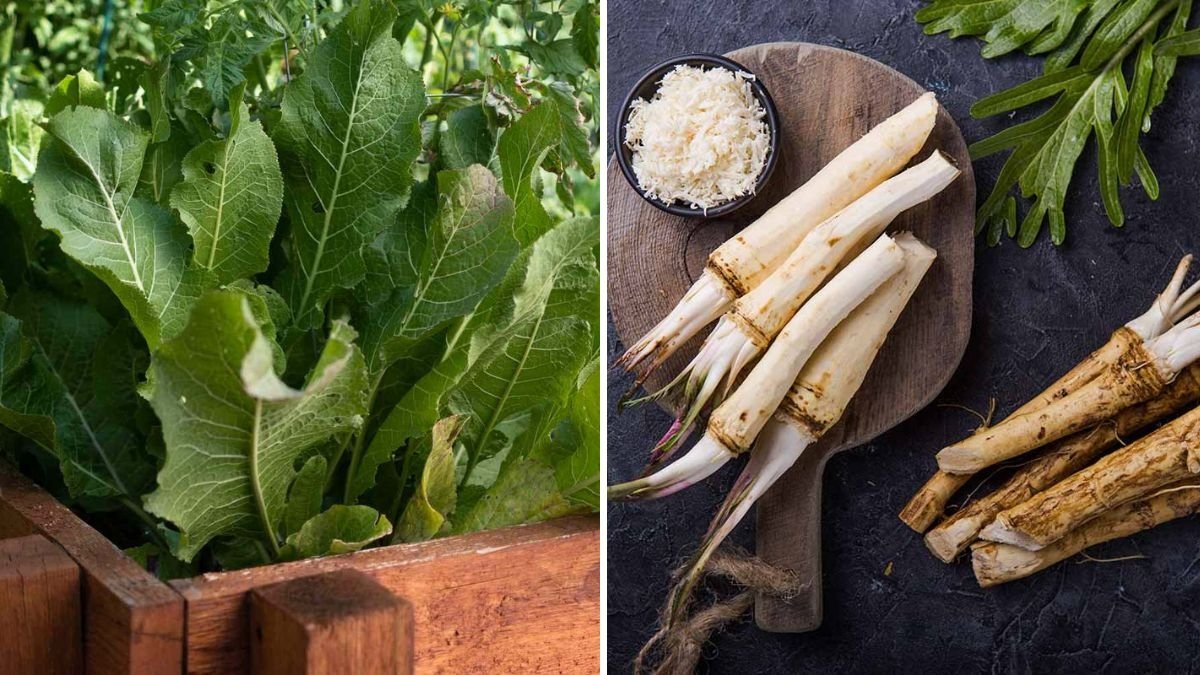





Leave A Comment